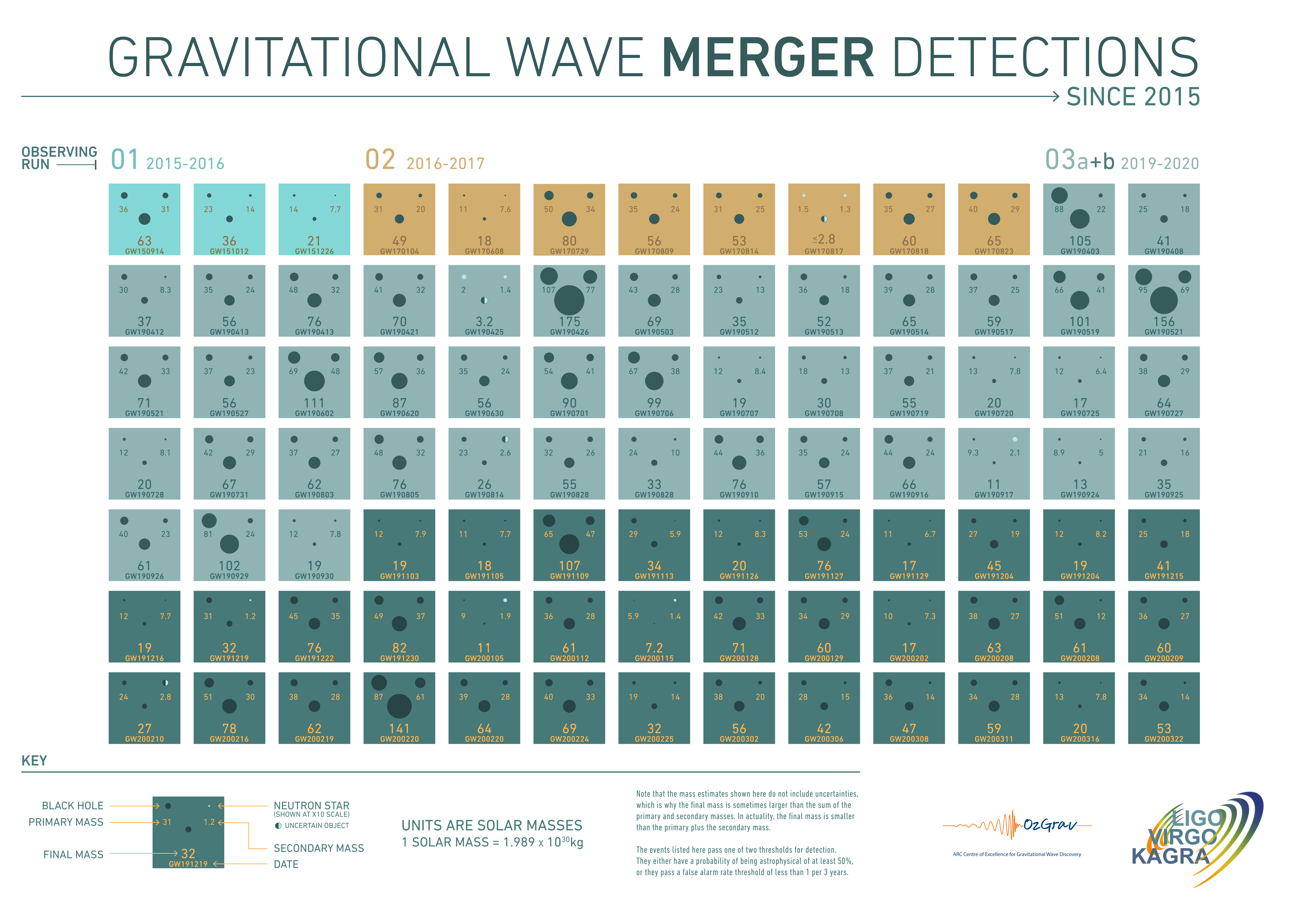Data and Open Science

The most important signal of the detector is the light power at the interferometer output (the so-called ‘dark-port’): this power is collected by a couple of photodiodes that convert the light received into a voltage signal. Along with this, the optical power of other auxiliary beams, the different control signals needed to keep Advanced Virgo at its operating point and some environmental sensors are also continuously recorded. The data are time-stamped using the Global Positioning System (GPS): absolute timing (of the order of tens of microseconds or less) is a critical parameter for comparing the data of the three different detectors (LIGO and Virgo) as well as for multimessenger astrophysics. In particular, the direction of a gravitational wave source in the sky is mainly calculated from the difference of arrival time of the wave between different gravitational wave detectors.
A gravitational wave modulates the difference in the lengths of the two long perpendicular arms of Virgo.Overall, the main effect of a passing gravitational wave is a frequency-dependent variation of the power at the output of the interferometer. A calibration procedure allows reconstructing the amplitude of the gravitational wave strain from the interferometer data: basically, this procedure removes from the dark fringe signal the contributions of the control signals by subtracting the corrections applied to the mirrors.
Ideally, during an observing run, the data is taken continuously, 24 hours a day, 7 days a week. In practice, that ideal situation is never achieved: there are always circumstances – some planned, others not – that interrupt data taking. The fraction of the time the instrument is actually taking data during an observing run is called the duty cycle. In order to monitor the status of the detector during the run, a complex system of sensors (in order of 10,0000 ) is made available that measure quantities that can affect the detector performance: they include microphones, seismometers, magnetometers, photo-diodes, current and voltage monitors, thermometers and cameras. The data from these monitoring systems, that are constantly recorded, constitutes the auxiliary channels. According to what these channels indicate, it is possible to tag the interferometer data as good or bad. The complex set of online and offline actions and tools aiming to data quality check and noise studies, is called detector characterization and is run in parallel to the data acquisition system to monitor and study the detector.
During an Observing Run, the calibrated data of all the detectors in the global gravitational wave network, including Advanced Virgo, are shared among the participating collaborations and used for real time searches of gravitational waves. Later, more refined and final calibrations are applied and the data are processed for the final analyses.
After a proprietary period, data from the LIGO and Virgo detectors are released openly to the scientific community by the Gravitational Wave Open Science Center (GWOSC).